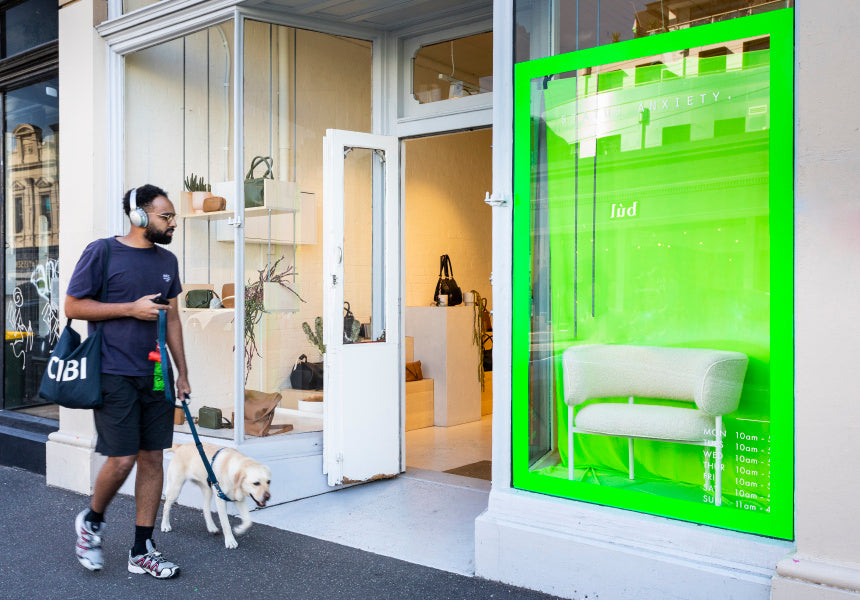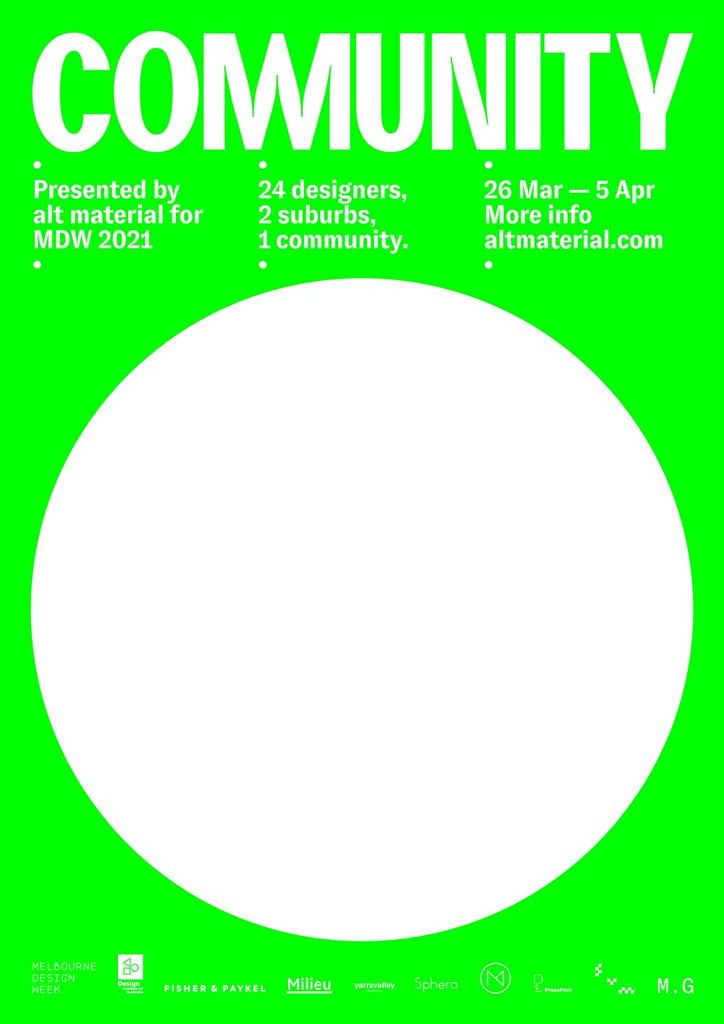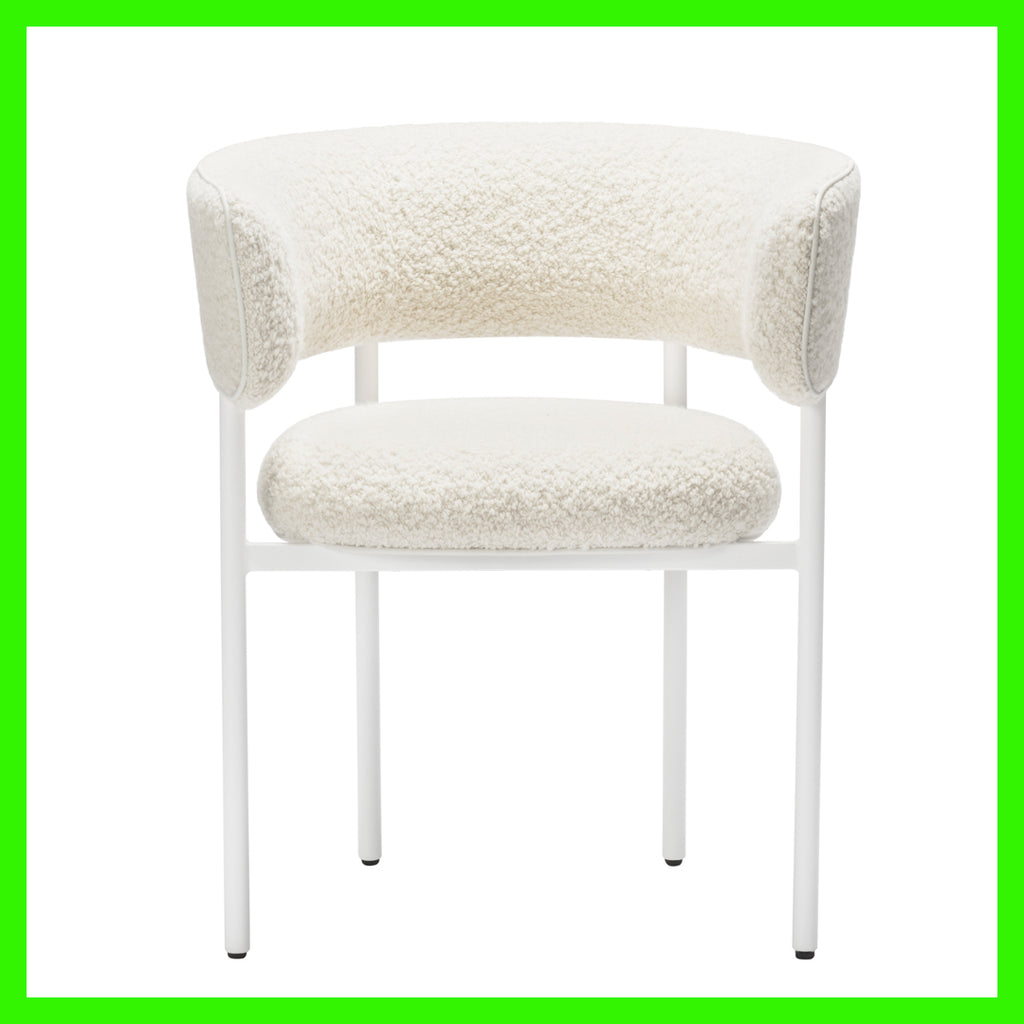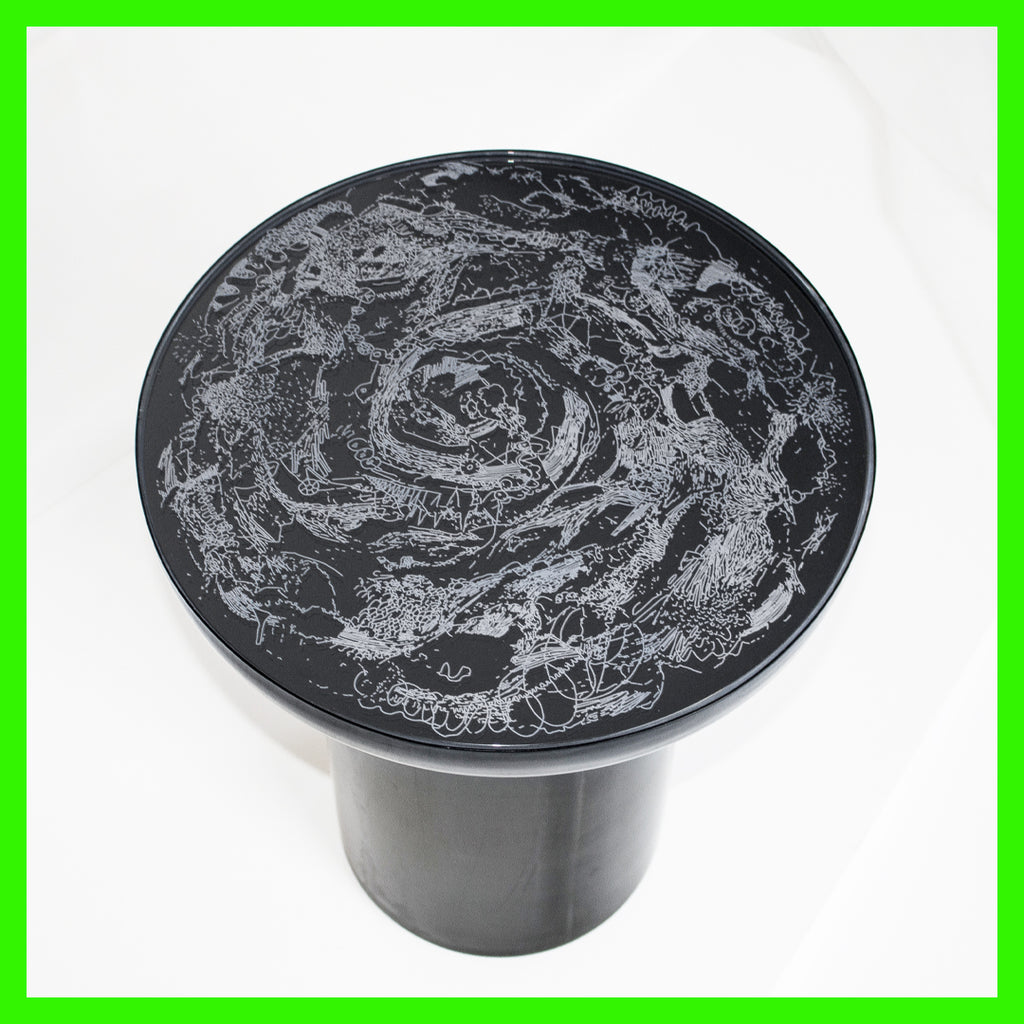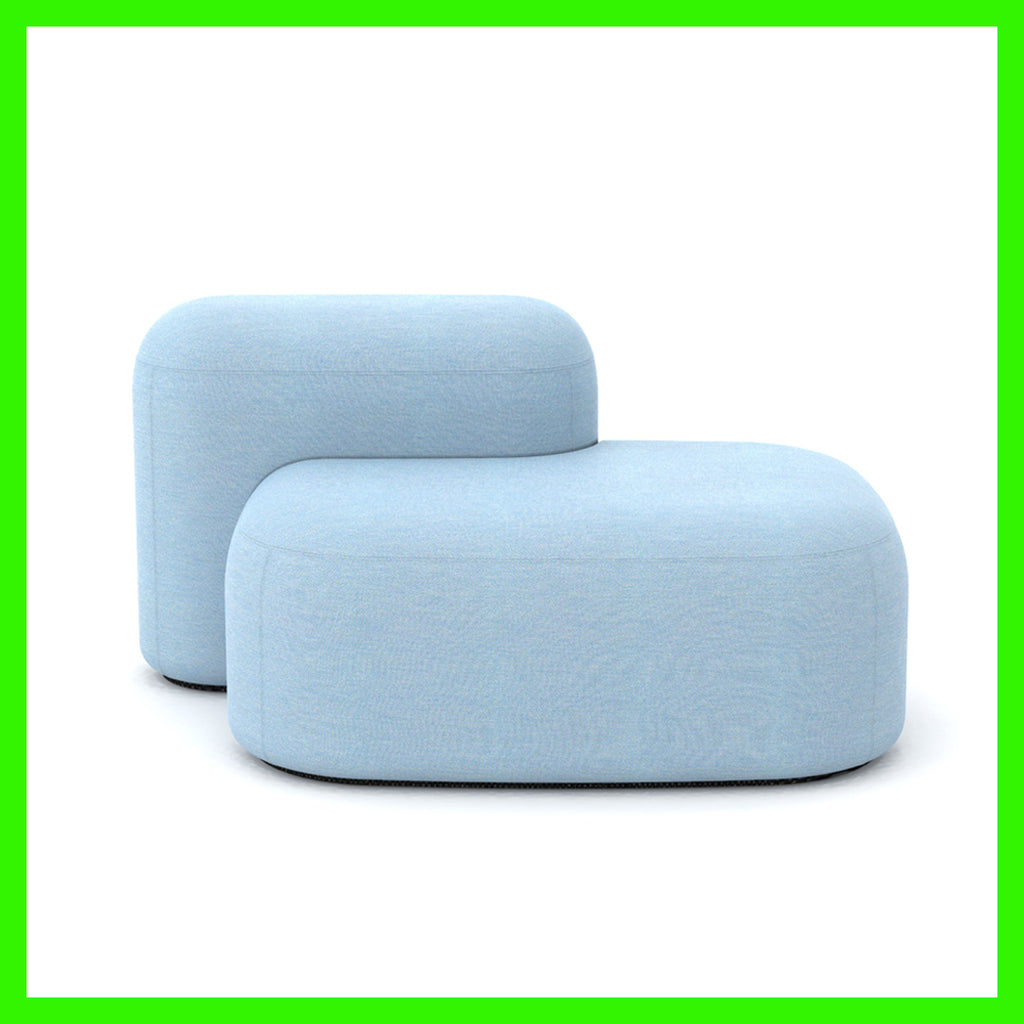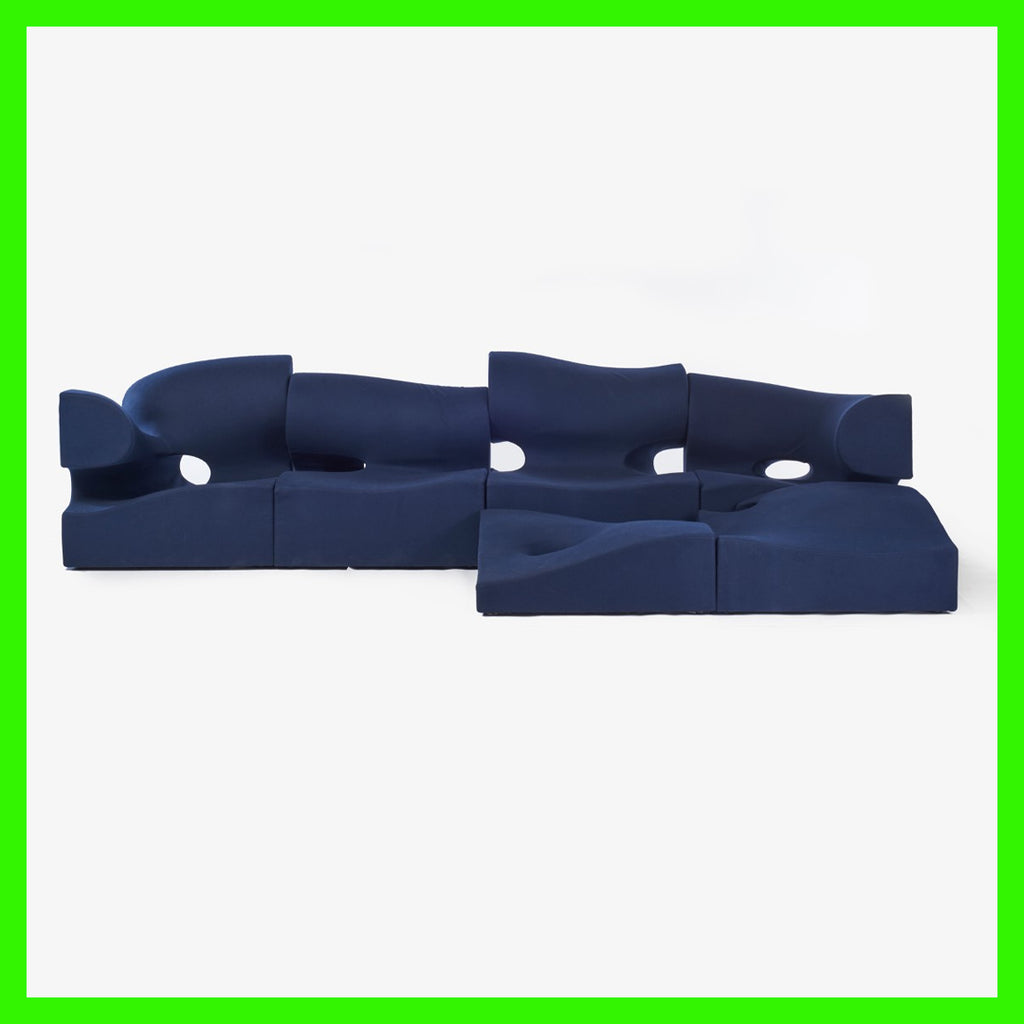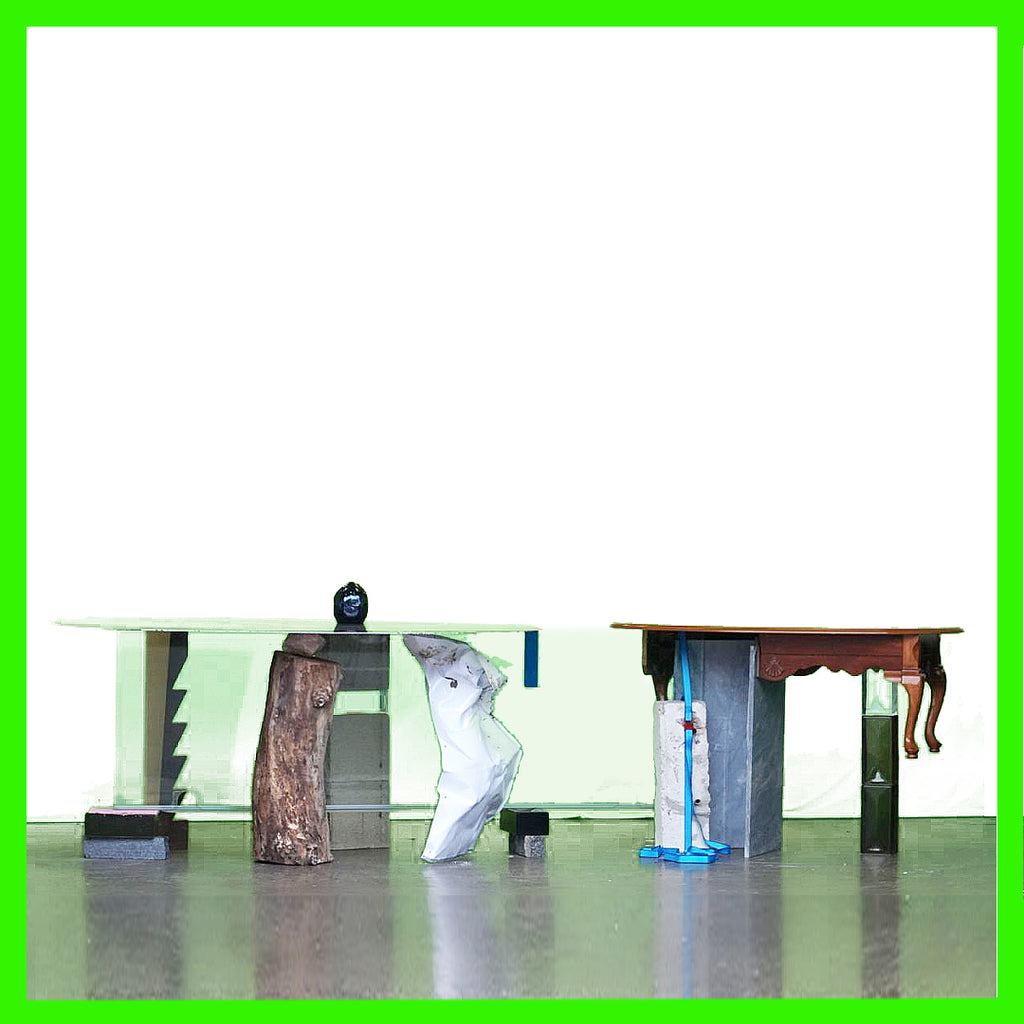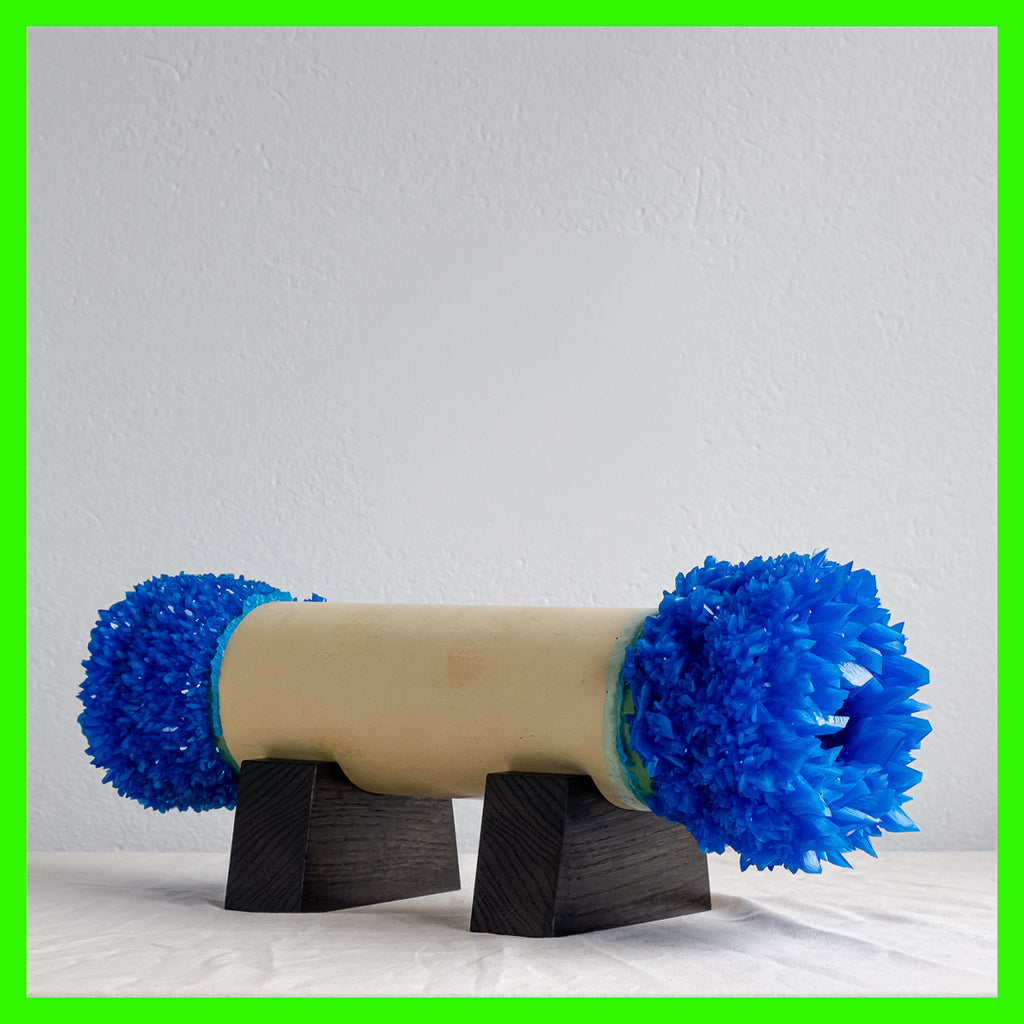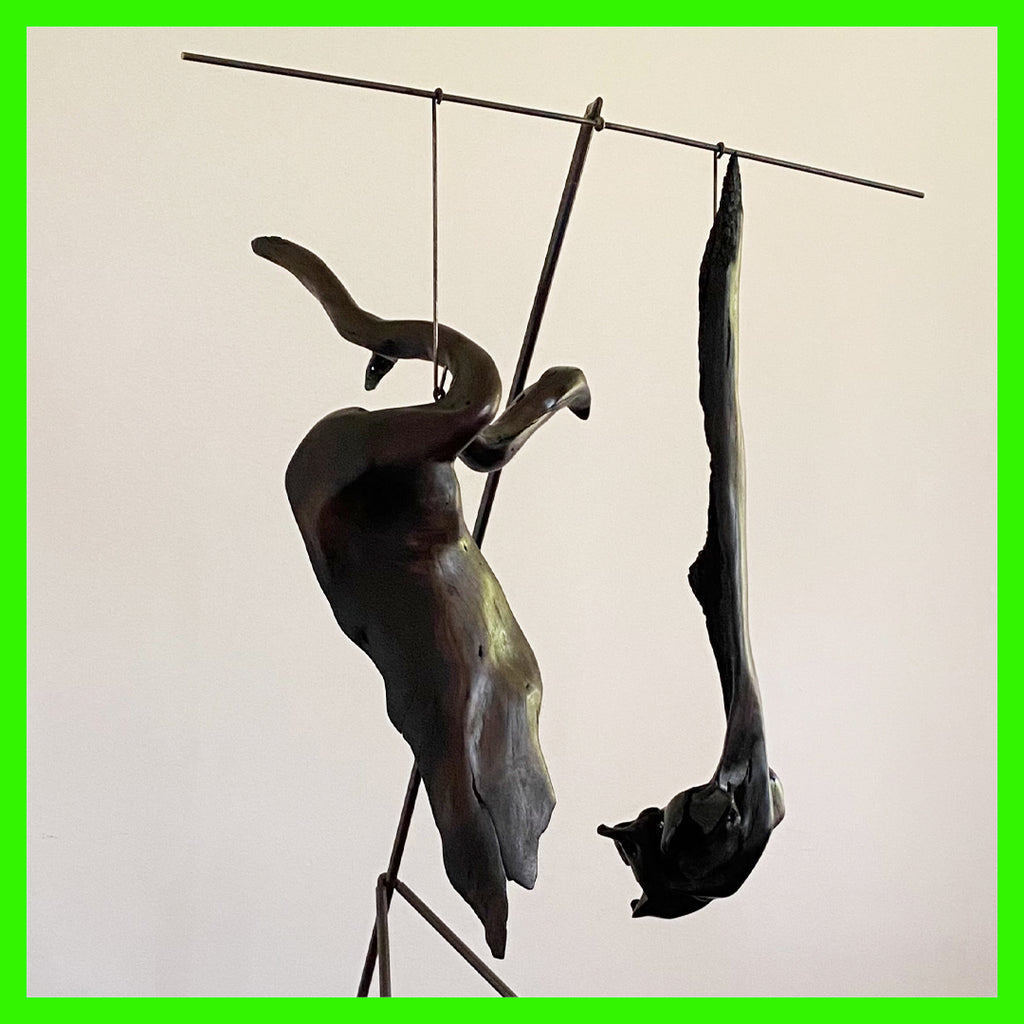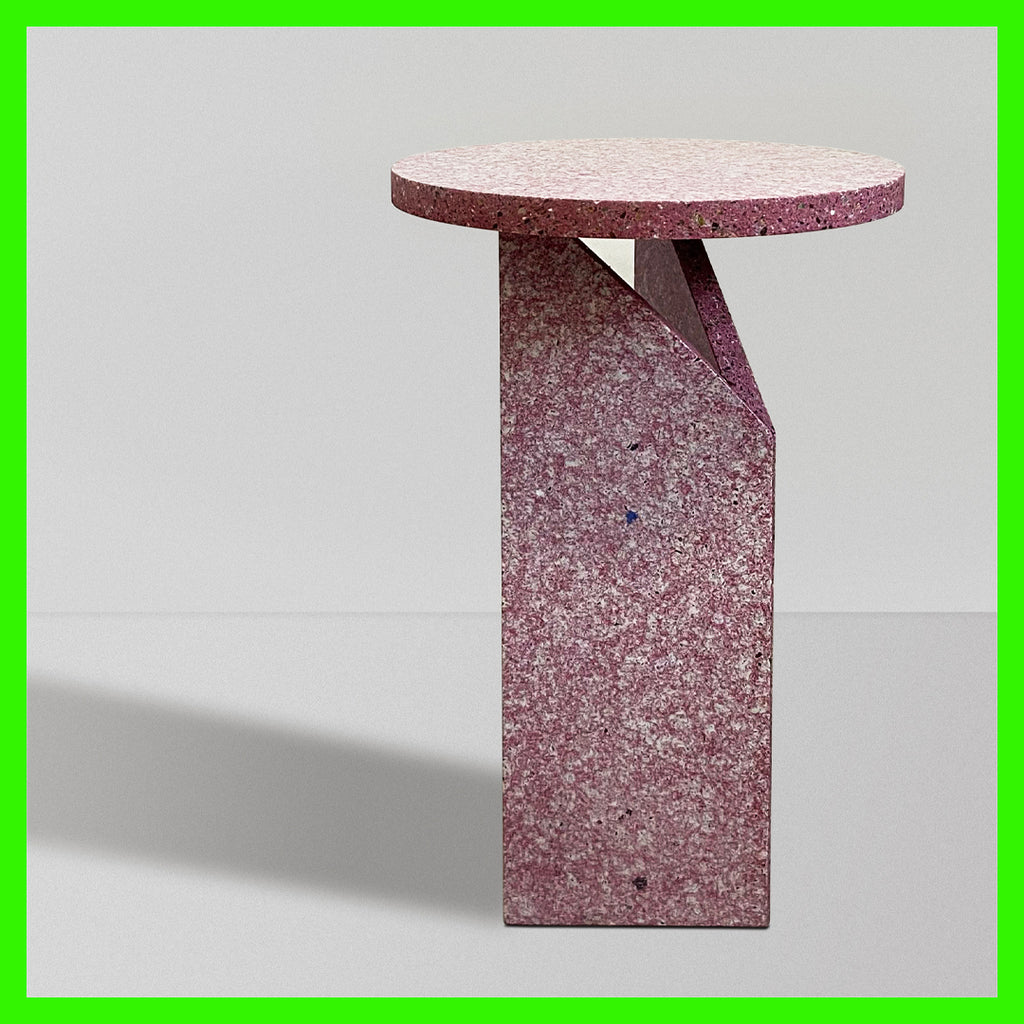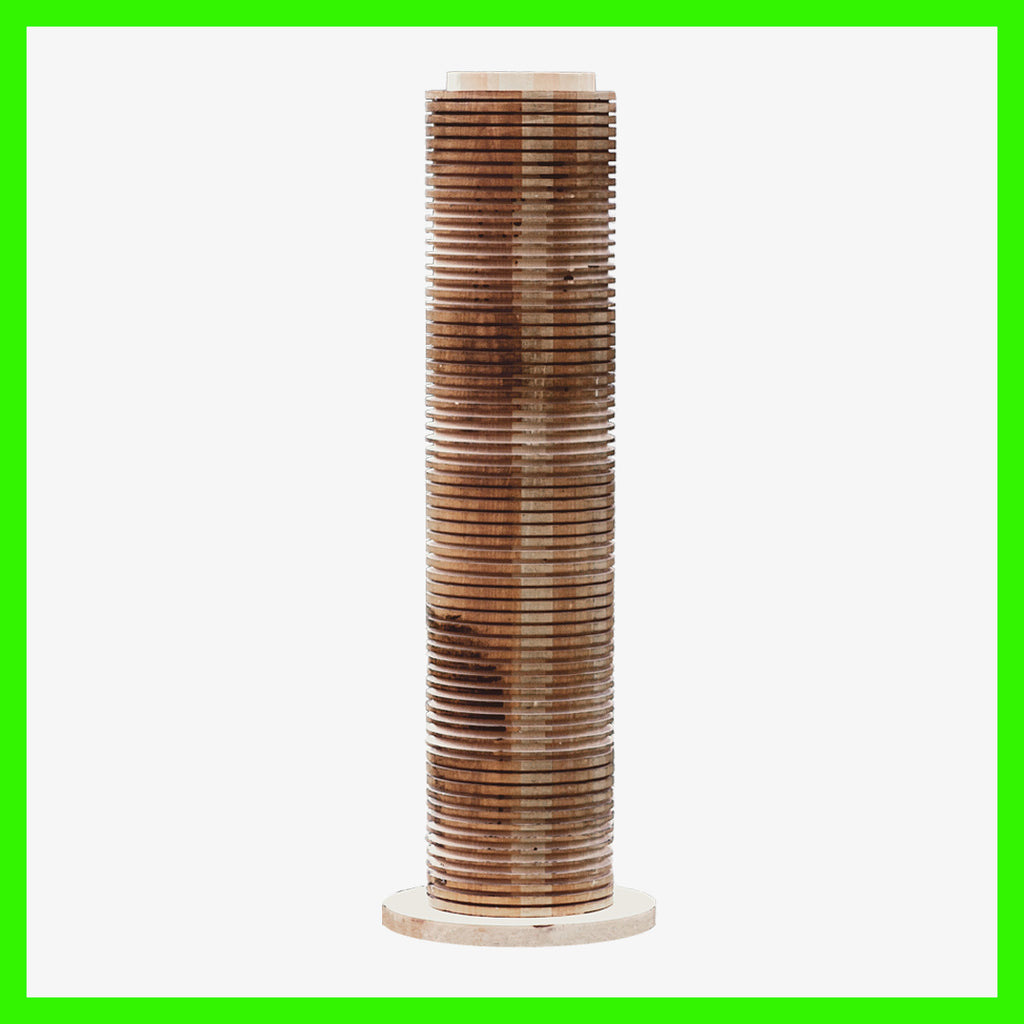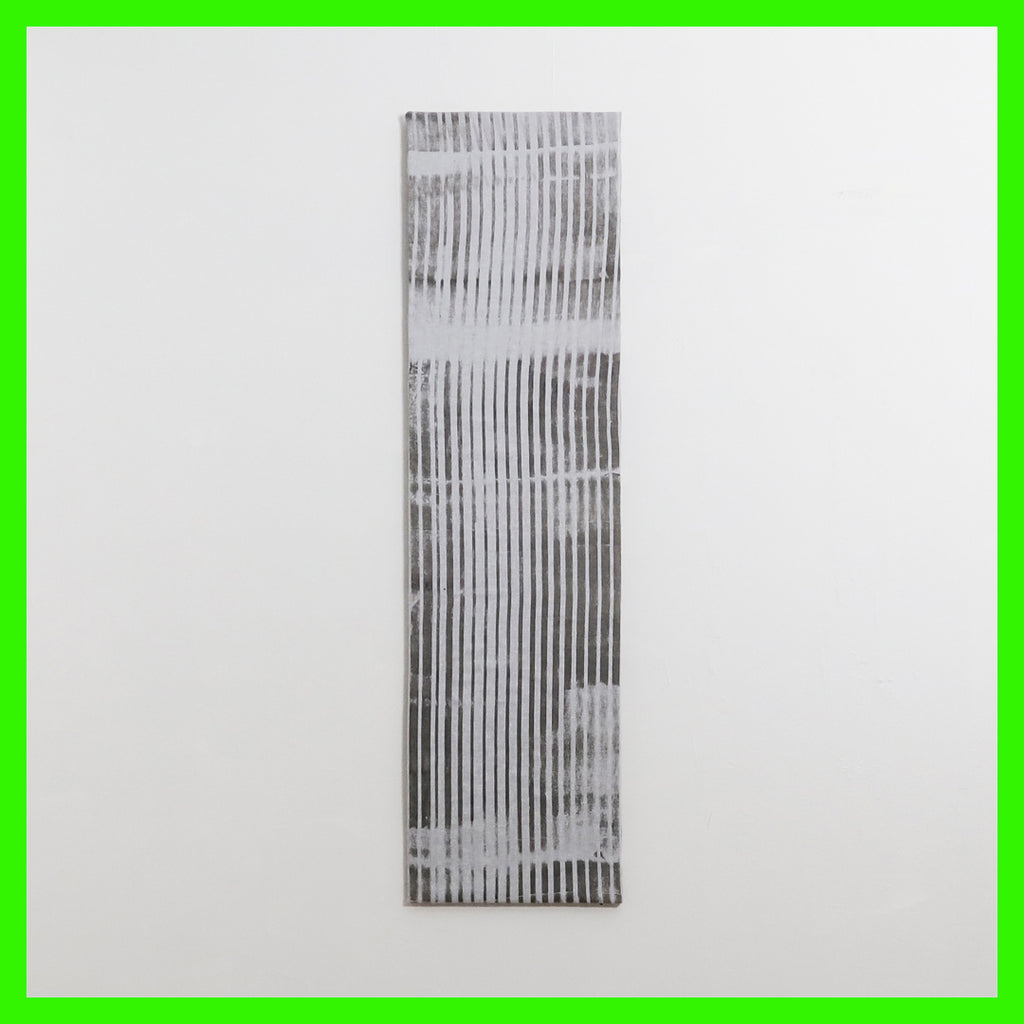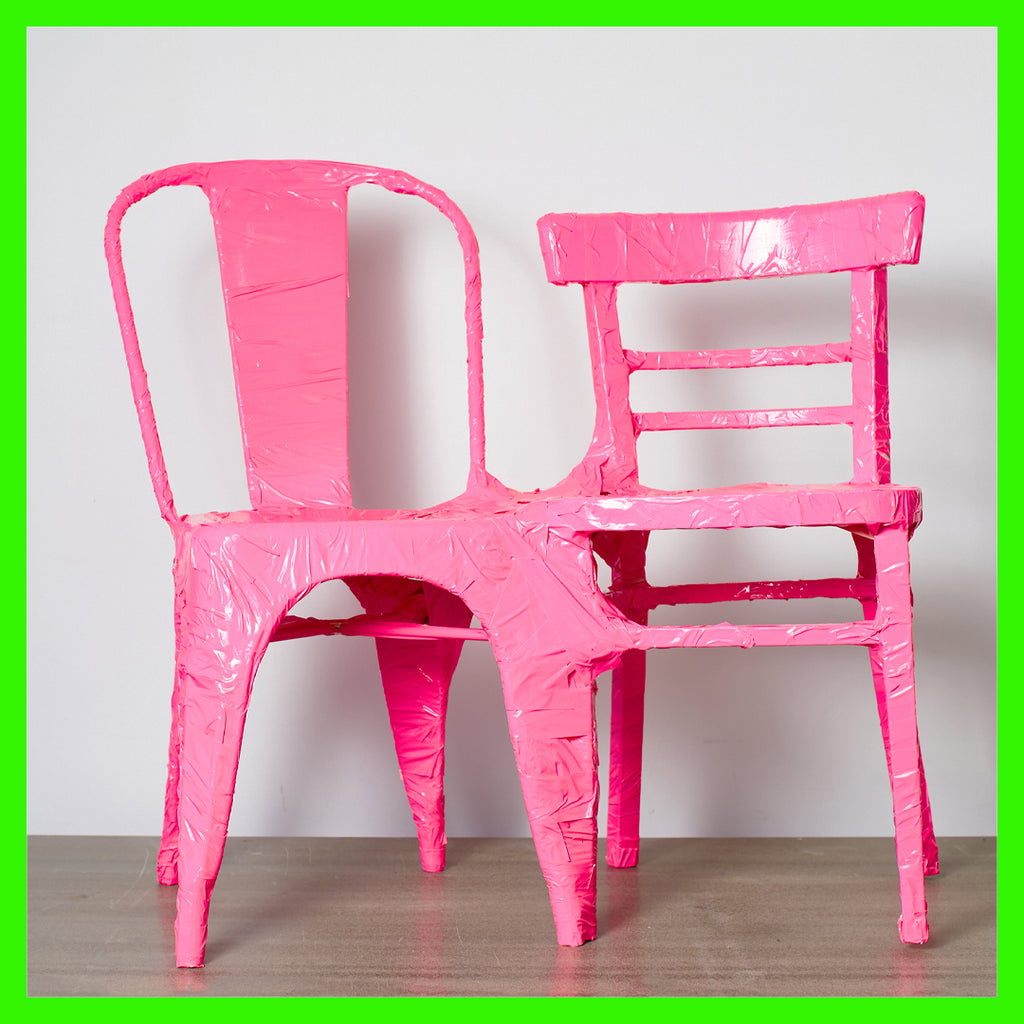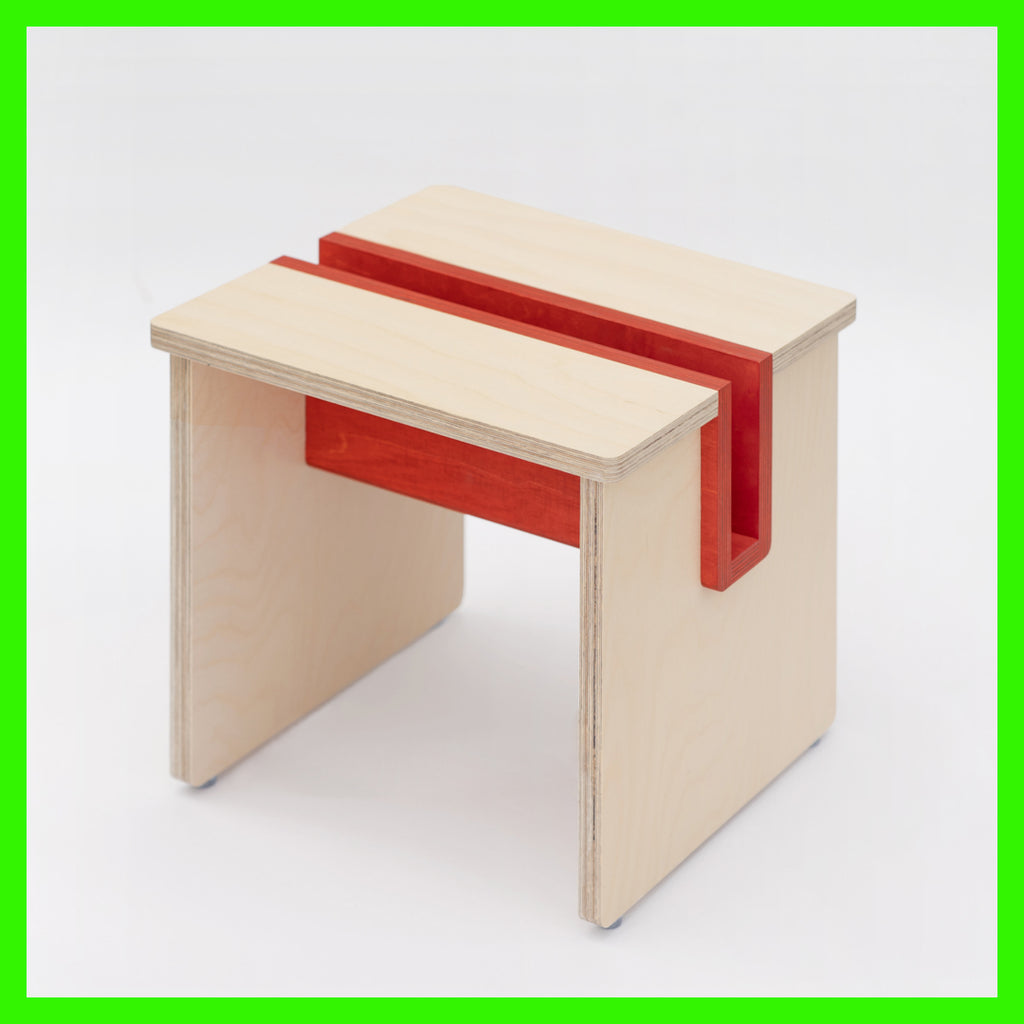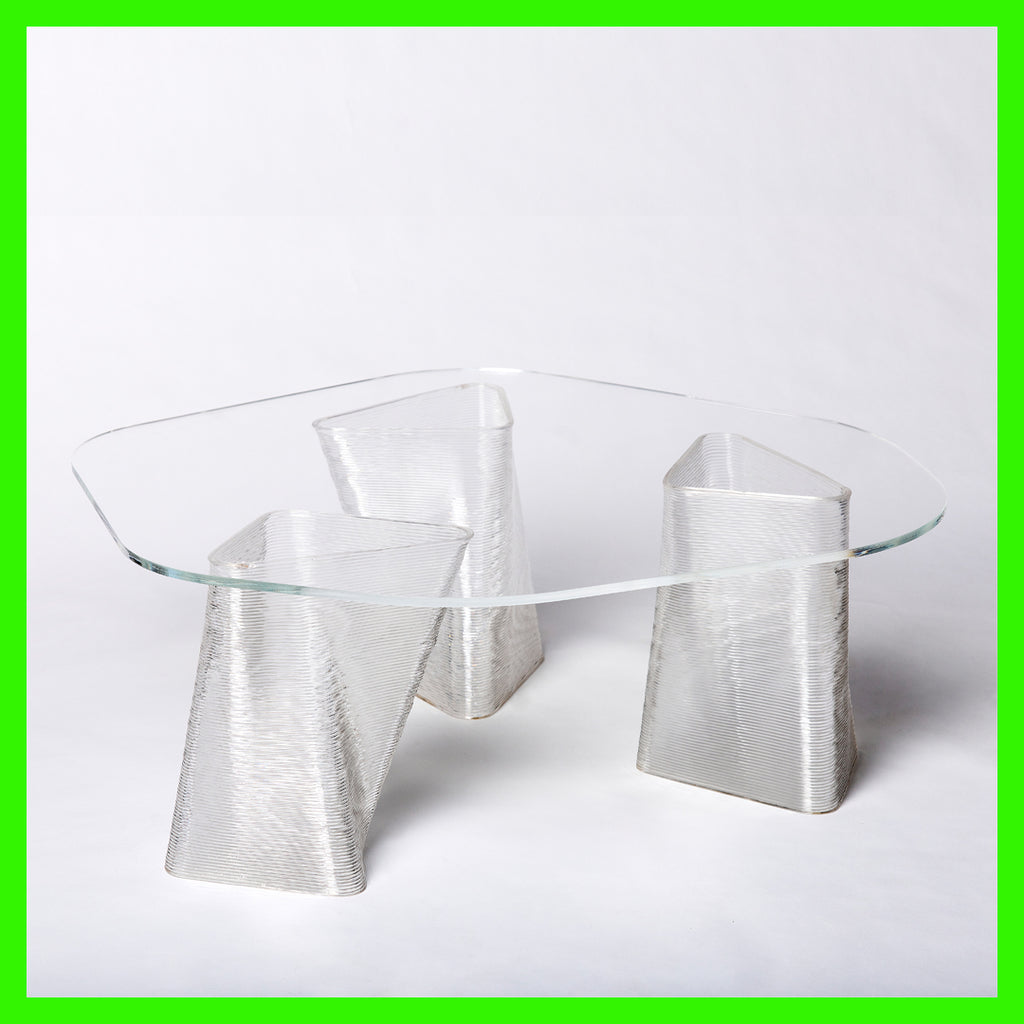Community
2021
Community speculates on the future uses of storefront spaces. A catalyst for new opportunities to utilise space and re-animate our high streets. Covid-19 has crystallised a social and economic movement bubbling beneath the surface of this past decade. We have seen mass introspection and a re-examination of how we live and want to live. How does the designer respond to issues of proximity now that we are forced apart yet desperate for global connection?
Existing businesses and tenancies now forced to re-address their relationship with the the High Street. We must speculate further on how these spaces can utilised and maximised. The storefronts of these spaces present an opportunity to re-imagine and re-invigorate our high streets, to define new kinds of communities – physically distanced yet closer together.
alt.material has chosen these storefront opportunities as locations for its fifth exhibition. Sites that can engage with the street without the need to enter a physical space. Inviting designers to fabricate a piece of furniture or object that articulates and responds to the theme of community. Be it a functional response—such as an item of furniture—or an exploration of how do we might give form to Community as metaphor.
Photographer: Joshua Bejan, Tobias Titz, Jana Langhorst
Graphic Designer: M. Giesser
Community Exhibition / Studio Edwards
Photography / Tobias Titz
The Emperor's New Wardrobe / Ash Allen
In 1837 Hans Christian Anderson wrote “Kejsarens nya kläder” (The emperor’s new clothes), where a vain ruler is deceived by a commoner to parade naked and is publicly humiliated. Still so apt today - if only… So here is a present for you Donald - a really great, big, fantastic wardrobe to house all your belongings. Fully transparent, it comes with a free self-reflective mirror and is so simple to use :) #perfectforyou
Font Bold Lounge Chair / David Thulstrup
I was brought up with a sense of “we are all in this together”, no matter your background, beliefs, political views, economic situation, or education. For me, being Scandinavian is really about accepting everyone; it’s deeply rooted in our general world view. The comfort of meeting the same people in your neighbourhood has definitely been elevated since the world has shut down last year. When I think of community, my professional network also comes to mind. I am genuinely interested in people and their opinions, and I love to exchange thoughts and ideas with people from the same industry. Though, it is not something I have aggressively pursued in the past; it has been a rather gradual evolvement through sharing my work.
Connection = Community / Dean Norton & Sarah Hotchin
Community is at the very core of our work, which we believe is achieved and realised through shared experiences and relationships, both personal and professional. A collaboration between Melbourne based British Designer Dean Norton and San Francisco-based Australian artist Sarah Hotchin. Our response to the theme Community will take form as a documented film and sculptural/functional piece, exploring shared connections, experimentation, and the design process. This will be a celebration of our design communities which will unfold and share the design journey from concept through to manufacture. A collaborative storytelling piece realised through a variety of design mediums from graphic implementation, film, material exploration, and collective fabrication techniques.
Derlot Editions x FebrikMOCHiMCH-03 / Alexander Lotersztain
As a Brisbane based studio our work relies on relationships with colleagues and collaborators around Australia and the world. A usual year would follow a substantial itinerary of travel to accompany this community through the design process, working closely to instil our brand of thinking and methodology, and allowing the final product to be a personification of our studio. The last twelve months have tested this version of a professional network; dislocating the hand, the eye, and the arm, as we all attempted to work throughout the pandemic. Last year however, as we transitioned from physical to digital communication, we found that we could rely on our strong existing relationships to continue to bring new, tangible, and subtle products to life. Our experience has been one of renewed confidence in an ability to think together within a community of skilled and passionate makers, despite distance.
Hammock / Adam Cornish
During the Melbourne lockdowns last year the idea of Community became more important than ever. The old saying you don’t know what you have until it’s gone speaks volumes in this situation. Strangely during these months we were able to take things slower and collaborate with people in different ways. One such collaboration was producing our Wooden Hammock design from solid timbers with a friend and independent maker. It seems only fitting to be able to show this collaboration in the Alt-Material Community exhibition.
Fingerprints / Adam Markowitz
Fingerprints is a moment in time snapshot of a living, vibrant community of craftspeople active in Melbourne. 13 independent makers were involved in the creation of this piece. Each was set a task to create the same simple repeated chip-carved pattern - and yet each created a pattern enlivened by the boldness, delicateness, hesitation, flippancy, impatience, self-doubt, compulsiveness, joy, and all other range of human personality written in the variegated carved strokes of each person. It argues for a value that lies beyond the economic - in the value of relationships, of the object as a token of community, and a signifier of connection to another human being. By celebrating the identity of the hand as a manifestation of a living person, the object celebrates a wealth that exists outside of pure consumptive value. A single, glueless, cantilevered dovetail is all that holds this piece upright - the simple strength of this hand-cut traditional joint being the only other recognition of the craft tradition which unites the people whose identities are written on its surface like fingerprints.
Misfits / Ron Arad
Daring & unconventional. A thumbs down to modular furniture.A collaboration between the Moroso family & Ron Arad. Based on early sketches by Ron in his London studio & then developed as a collaboration - guided by Ron with each of forms hand carved, much like sculpture.A fun & intuitive process using only a knife and glue to form the first prototypes. Born from a small group of brave & daring design makers - ‘misfits’ to push conventions & re-imagine the modular sofa.
Smoko / Jordan Fleming
‘Smoko’ is an assemblage of collected materials featuring remnants of the bygone tobacco industry that once boomed in my hometown of Myrtleford, Victoria. An abandoned fence stringer, chainsaw milled then hand-shaped by my father and I, forms the seats - the timber’s unique grain and character guiding the final form of the work. Salvaged ‘tobacco pins’ found near the derelict tobacco shed next door to our property, now straightened and polished, become the many legs that support the timber seats. Much like the many hands that shape a community, these pins form a grounded foundation as relics from the past.
community amalgam / Pascale Gomes-McNabb
A table/tableau. The community table - bringing it to the table. We sit down to break bread, share ideas, welcome new and old friends, talk through loves, lives, ideas, grief and happiness. A table is a hub, often a starting point, for the creation of a community in your family and wider afield, a focused space, a neutral playing field, a space to tell stories and imagine other places, to create and make. The table allows boundaries to be crossed, traversed. It is a space for reflection, nourishment, nurturing ideas and relationships and connections. A community of shared lives, tales and experiences. A community table is a moving feast of shared interest & objects, exploration and conversation. My aim is to create a table from salvaged, gifted, borrowed and found materials & elements from my community. A community creates a table. The table might also turn into a Community Wishing Table...
Cylinder Sample / Elliot Bastianon
Looking at the exhibition brief through the lens of Bastianon’s current research projects—mineral growth on human made objects—he considers the defining qualities of a community as being applicable to his current material experiments. A blue crystal growth has established itself. In its own way, it has followed a set of rules, ordered itself in the one place and has even flourished and expanded out to new areas. But some communities can be strange and unwelcome.
Closer / Olive Gill-Hille
Living through the emergence of COVID-19, for me very fortunately without being directly affected by the illness, one of the things that felt especially painful is the way elderly and vulnerable people weren’t able to be around their community and loved ones, touching and closeness became dangerous during a time when it was what people craved most. The isolation caused by the disease has affected everyone, and I think much comfort has been found for people in knowing it’s a shared experience. This work looks at isolation within communities and the loss of touch and physical connection.
Ledge Side Table / DesignByThem
Communities often share a common sense of responsibility to each other. We have seen this reflected throughout history and more recently in our response during the pandemic for the greater and mutual benefit of our society. Our work captures how that sense of responsibility can be embodied in an everyday object through its materiality. As we become more and more conscious about the waste we constant-ly produce and its impact on our direct and extended communities we become more respon-sible for what we do with it. In an effort to embody and symbolise that sense of shared responsibility, our work is made using the discarded glass and fabric of our community. Turning waste into a functional object that not only removes waste but also reduces our burden on new resources.
2021.5 / Tom Fereday & Kate Banazi
Tom Fereday (industrial designer) and Kate Banazi (artist) have collaborated to present 2021.5 a hybrid sculpture and artwork presenting a physical and tacit documentation of their person-al experiences during the COVID19 pandemic. Driven by local data of COVID19 case statistics alongside qualitative diaries kept by artist Kate Banazi throughout the pandemic, a bold and striking 1.5m (social distancing guideline) totem sculpture was intricately carved from solid laminated beech acting as a large-scale roll-ing press allowing the imprinting of graphical lines of both positive and negative data. Pressed onto a linen artwork each line and variation (utilising natural dyes) is printed with a dark wood stain, resulting in (an optimistic) flawed and honest visual depiction of the emotional torrent and experiences of this unique time, one that leaves a lasting permanent imprint. The result-ing hybrid sculpture is intended to act as a permanent marker to document and highlight this historic period in time.
2021.5 / Tom Fereday & Kate Banazi
Tom Fereday (industrial designer) and Kate Banazi (artist) have collaborated to present 2021.5 a hybrid sculpture and artwork presenting a physical and tacit documentation of their person-al experiences during the COVID19 pandemic. Driven by local data of COVID19 case statistics alongside qualitative diaries kept by artist Kate Banazi throughout the pandemic, a bold and striking 1.5m (social distancing guideline) totem sculpture was intricately carved from solid laminated beech acting as a large-scale roll-ing press allowing the imprinting of graphical lines of both positive and negative data. Pressed onto a linen artwork each line and variation (utilising natural dyes) is printed with a dark wood stain, resulting in (an optimistic) flawed and honest visual depiction of the emotional torrent and experiences of this unique time, one that leaves a lasting permanent imprint. The result-ing hybrid sculpture is intended to act as a permanent marker to document and highlight this historic period in time.
Central Side Tables / Rhys Cooper
Community to me is a group of people with a common interest. The Covid-19 pandemic demonstrated how different communities can work together to achieve a common goal. It also showed how intertwined we are, and that each community network relies on others. The Central tables draw inspiration from my daily commute to Sydney via public transport. They are designed so that each component is reliant on the next, representative of people working together to achieve a common goal.
Stay Together / Sam Jacob
These are pieces of furniture as social sculpture that highlight the way that chairs organise our bodies in space. These adaptations take as-found, individual chairs then rearranges them in different ways: Back to back, side to side, in groups of varying number. Each of these new arrangements creates a different social situation. Each presents a “unity through inclusion rather than the easy unity of exclusion” as Robert Venturi put it in Complexity and Contradiction. These pieces are a kind of junkshop love seats exploring how more ambiguous and experimental relationships and community can be formed by furniture. The project also explores how the process of design and making forms community. Made from different 2nd hand pieces, each with its own past life and character, now bound together using tape into a new whole. Our process has formed communities too - from eBay sellers to our dialogue between London and Melbourne. The act of making these pieces was extremely distanced - by pandemic, by geography, by timezone - yet perhaps because of this also highly collaborative. And that process becomes part of the chair’s expression showing how making itself is an act of community.
The United Stool / Studio Ryte
Community is a collection of individuals, as the sum of connected minds. During the past year of pandemic, social distancing has forced people to become isolated both physically and mentally. People are more aware of the importance of self-sufficiency, which includes masks, hand rub, water, power, and food etc. We are gradually shaped into introvert beings. Designers, being members among the community, have the opportunity to innovate, help and unite the crowd to endure the on-going hardships. We would like to offer an easy-to-fabricate design that promotes the concept of coming-together as one community and sharing resources among each other. Highlighted by a bright and vivid color, the stools can be connected into a single line, bringing users’ attentions to uni-ty. Our design is flexible to use individually as well as a group, adapting to the social distanc-ing policy at the time. The series, when in larger number, can be used in both public or private areas such as schools, offices, parks, and markets etc. When not in use, it can be grouped and stacked to become a social icon in the neighborhood. It promotes resilience, strength, and the power of people. Community well-being is about looking after each other. We hope our design can facilitate the engagement of the public from smaller groups to larger communities in the coming future.
Unity Seat / Skeehan Studio
The ‘Unity Seat’ is a patchwork built from a community of collaborators, manufacturers and craftspersons. This exercise in material research represents our community, celebrating the value in sharing knowledge and connecting industrys. Using the visual language of individual tiles, to express collaborative practice and research. Framed in a timber seat, each tile can be removed and exchanged, encouraging conversations, learning and connection.
UNION / René Linssen
UNION is a coffee table that re-imagines what coming together around furniture could look like in a post-COVID world. As COVID has affected global supply chains, now more than ever we see the importance in our local design community and fostering the resources we have available at our doorstep. Every part of the coffee table is made locally in the designer’s hometown Canberra, taking advantage of modern manufacturing techniques available to him. The leg bases of the table are crafted from recycled PET (plastic bottles) which have been 3D printed using a custom 6-axis industrial robot fitted with a plastic extruder, developed in-house at the University of Canberra. This collaboration is a unique example of what local man-ufacturing could look like and hopefully inspires others to think of ‘out of the box’ or consider unconventional production methods that could be available to them. Finally, the table top is made from CNC machined acrylic, supplied by a local manufacturer. Acrylic was chosen to symbolise the new world we’ve come to know with perspex facemasks and screens becoming a normal part of the community we engage in. The clear transparency of the top also allows the unique form of the legs to be exposed and made the hero of the design.
"Existing businesses and tenancies now forced to re-address their relationship with the the High Street. We must speculate further on how these spaces can utilised and maximised. The storefronts of these spaces present an opportunity to re-imagine and re-invigorate our high streets, to define new kinds of communities – physically distanced yet closer together."
RE-IMAGINING THE CONVENTIONAL EXHIBITION - Physically distanced yet closer together.
A self-initiated exhibition by Studio Edwards for NGV'S Melbourne Design Week reflecting on the impact of Covid-19 & economic shifts that have affected businesses and tenancies on the high street
"A display of furniture and design objects across 24 empty storefronts in Fitzroy and Collingwood. Reflecting on the impact of Covid-19 and recent economic shifts that have affected businesses and tenancies on the high street."
Exhibiting Designers
Sponsors
More Exhibitions

